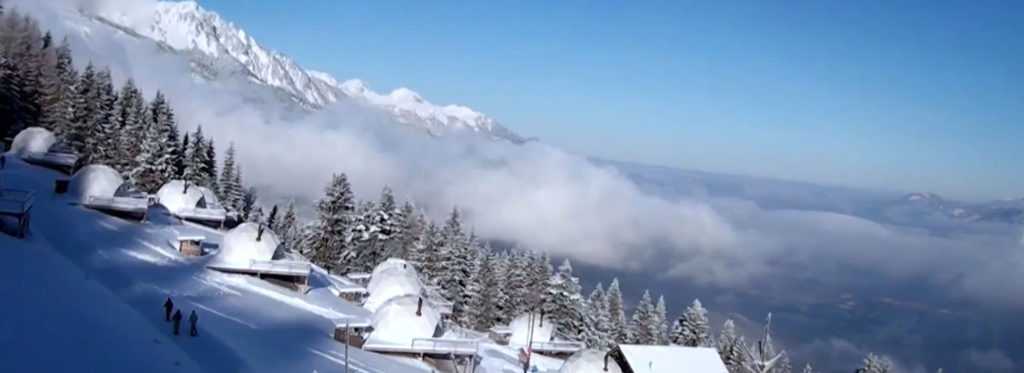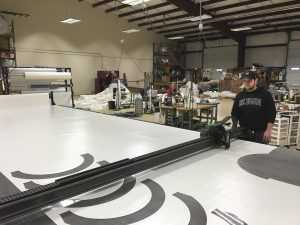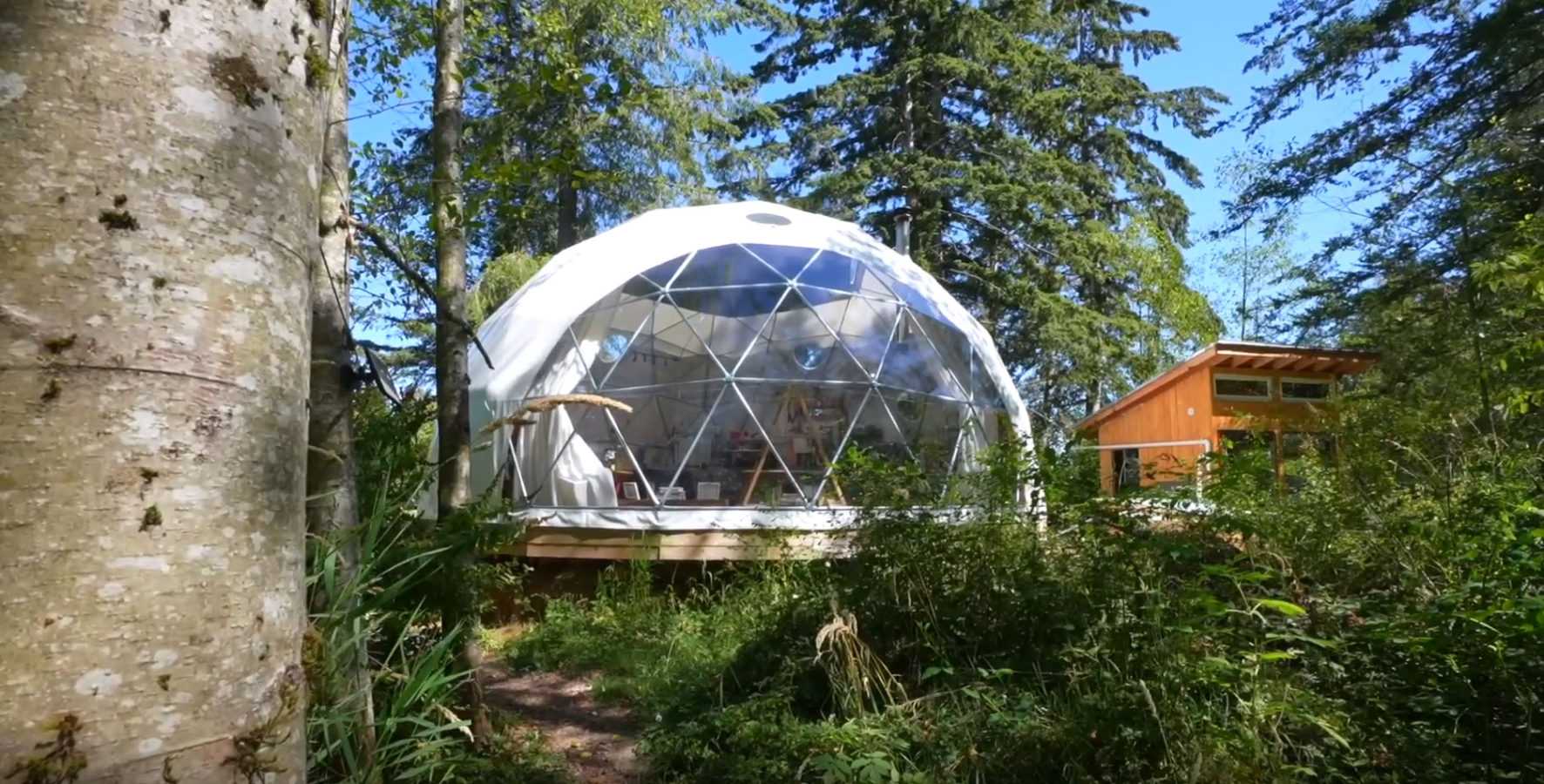Stay dry and enjoy year-round comfort in your Dome Sweet Home.” – Pacific Domes
No matter where you live, there are times when condensation management can pose an issue for those who love spending time in their under-canvas dome. The Essential Guide to Managing Condensation in Your Dome aims to provide you with common-sense ‘steps, tips and how to’ resources – so you can stay dry and comfortable all year-round!
A common issue with a wide range of tent-like structures happens as a result of factory-sewn panels that are also joined together at openings. Seams are considered the weakest points and thus most prone to leaking.
The good news is that Pacific Domes uses seam-welding in the fabrication process of their waterproof fabrics –thereby, preventing leakage issues. For example: Vinyl-coated polyester fabric domes and Natural fiber domes.

Condensation FAQ’s
Condensation, including frost accumulation, is a naturally occurring phenomenon. Humidity in your dome can come from simple daily activities such as, breathing, bathing, cooking and drying wet clothes. The average person emits 1-cup of water per day through their breath, alone.
Although you will not be able to stop the condensation process completely, there are simple solutions to prevent condensation in your dome.
Steps to Prevent Condensation:
- Site Selection: Choose a site with good airflow – avoid low-lying areas where moisture tends to accumulate.
- Install Dome Properly: Ensure your dome cover is taut – sagging leads to water pooling and condensation.
- Heating: The dry heat of a wood-stove is preferable to propane. If you are using propane, a ventilation fan may be necessary as it adds moisture to the air upon combustion.
- Ventilation: Keep a vent open to allow air circulation – this helps to reduce moisture buildup.
- Insulated Liner: A complete insulated liner will reduce condensation – allows air to cool before it reaches the outer fabric.
- Moisture Barrier: Use a moisture barrier under your deck to prevent moisture from seeping through the floor. Radiant Heat Flooring has proven to serve as a moisture barrier, as well.
- Thermo-Shield® Paint: The reflective quality of Thermo-Shield insulative paint will keep the outer cover more consistent with the inside temperature – thus, reducing condensation *(more below).
Tips to Manage Condensation:
Now that we know how to prevent it, let’s see some other reasons why some of us might be having anywhere from mild to serious problems with managing condensation – and, what solutions there are to mitigate it:
- Bathing: If you have a bath shower inside your dome, ensure it is well vented with a ventilation fan.
- Cooking: Avoid cooking with propane. A wood-stove is preferable in a damp or humid climate. Keep the lid on your pot to avoid excess vapor.
- Wipe Down Surfaces: Use a towel or cloth to wipe down interior surfaces affected by condensation in the morning. Tip: Use 1/4 cup of borax per qt. of water to prevent mold.
- Moisture absorption: Place rock salt, charcoal briquettes, or silica packs inside the dome to absorb excess moisture. DampRid has also been found to be effective.
- Monitoring Weather: Observe weather conditions and adjust ventilation accordingly.
- Manage Wet Gear: Keep wet gear outside the dome or in a vestibule to mitigate excess moisture inside.
Additional Steps to Consider
Thermo-Shield Insulative Paint: If you live in climates subject to temperature extremes, such as high humidity, rain, frost or snow, you may wish to consider taking additional steps to manage condensation in your dome. For Example: clients have discovered that Thermo-Shield® Insulative Paint has the added benefit of providing insulation – great for desert regions, as well.

Thermo-Shield® Insulative Paint is a non-toxic elastomeric paint that contains ceramic borosilicate micro-spheres – a space-age technology used in space shuttles to prevent heat damage as they leave or re-enter the atmosphere.
Seasonal Inspections: Just like homeownership requires ongoing maintenance, it’s wise to perform an annual maintenance inspection of your dome cover before winter, as well. In conventional homes, this might mean taking preventative measures to keep the elements out by caulking around gaps, doors and windows and even, painting your home every few years.
Unique to fabric-covered structures, waterproofing and seam-sealing tent fabrics are steps commonly referred to by the tent manufacturing industry as Seasoning and Waterproofing. There are many online self-help videos – it helps to know the difference.
With dome home shelters, adding that additional waterproofing layer of protection to your dome cover at some future point may help extend the life of your cover well beyond its normal lifespan. That said, here’s a simple DIY Waterproofing & Seam-Sealing maintenance recipe that works for repairing rips and tears, too:
DIY Waterproofing and Seam-Sealing Recipe (instructional videos can be found online)
- 50/50 mixture of 100% Silicone and Mineral Spirits
- Tools: Thin Brush, Gloves, Paper Towels & Sponge (for wiping excess), Water (for cleanup), Acetone (optional).
Pacific Domes Guarantee
Pacific Domes uses the highest quality materials in the fabrication of our dome covers. We invite you to take the Pacific Domes Tour of our state-of-the art facility and equipment – operated by skilled technicians who take pride in their Made in the USA craftsmanship.

